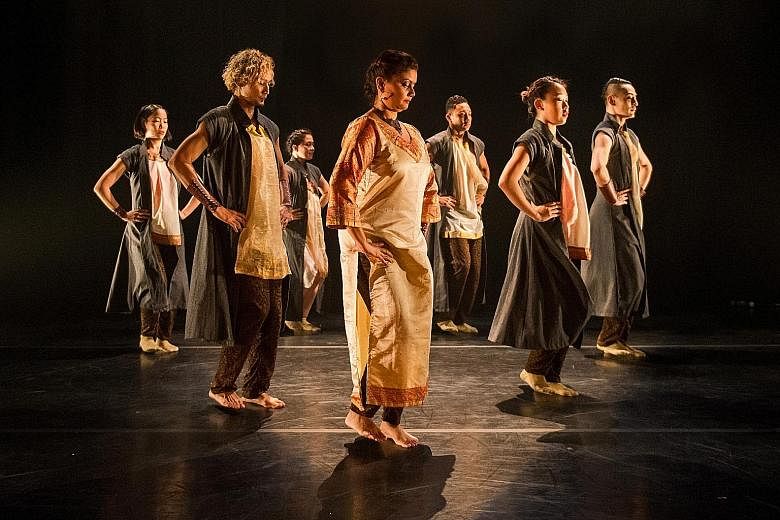Choreographing a full-length dance work is a complex task. Shahrin Johry tried to do just that in Maya Dance Theatre's first production for this year, Ka. But, as he is relatively new to choreographing full-length works, the results were mixed.
As a performer, Shahrin's rhythms are clear and on the beat. Watching him attack the space as he constantly changed levels and directions was exhilarating. This was also evident in the group work and solos he created.
The performers rose to the occasion as they negotiated the space with speed and accuracy. It was nice to see the more established, locally based dancers such as Bernice Lee, Gianti Giadi and Star Guo continue to become more technically accurate with their craft.
One of the highlights had to be watching Maya's artistic director, Kavitha Krishnan, finally taking to the stage. Since setting up Maya, she has had to sacrifice her dancing to devote time to building up the company. She seemed a little nervous, but when she had to display the more intricate steps of bharata- natyam, she was a joy to watch.
-
REVIEW / DANCE
-
KA
Maya Dance Theatre
Drama Centre Black Box
Last Friday
But movement design is not the only consideration when creating a long-format dance work. After movement has been designed, how does one use it to articulate one's ideas clearly and succinctly? Using the overarching theme of knowledge and its transmission, Shahrin created what seemed like a rather personal work about his encounter with dance. But Ka had too many ideas crammed in. While there was a clear attempt to weave a sense of flow through the work, its pace was uneven.
Having received the bulk of his professional training in the form of Bharatanatyam from Krishnan, it was no surprise that Shahrin's choreography used highly symbolic gestures to convey his messages.
In Ka, a gold book propped up on a wooden book stand served as an important representation of a repository of knowledge. It was ceremoniously written into and ritualistically passed from one person to another at various points.
In other more dramatic moments, dancer Giadi started to gag after she stuffed pieces of paper with movement instructions written on them into her mouth, alluding to a dancer consuming choreography to the point of utter discomfort. Several mudras (coded hand gestures) from bharata- natyam were also appropriated into the choreography. The problem was not the symbolic gestures themselves, but the fact that there were so many of these peppered throughout the work that their individual significance was diminished.
Another section that was problematic was when the performers acted out the learning process by pretending to learn dance steps on stage. From the way they performed, it was clear that learning had happened during the rehearsal process. In this age of possibility in contemporary performance, why did Shahrin not choose to devise a task of actually learning new movements in real time on stage?
Perhaps choreography in dance is not so much about movement design as it is about designing a coherent experience in space and time. Movement design should be regarded as a means to creating this coherent experience.
Shahrin has proven that he has the ability to design movement. The challenge for him now is to continue finding ways to create that coherent experience.

